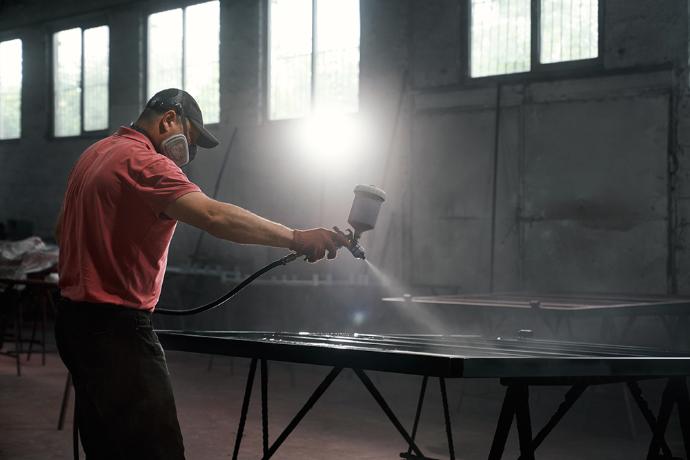In the world of coatings and painting, manual spray guns are classic, indispensable tools. Whether for automotive repair, furniture restoration, or industrial surface treatment, they hold immense value across various applications. Unlike automated equipment, manual spray guns give the operator significant flexibility and control, allowing each spray and pass to reflect the artisan’s care and craftsmanship.

What Is a Manual Spray Gun?
A manual spray gun uses air pressure to atomize liquid paint and evenly spray it onto surfaces. Compared to rollers or brushes, spray guns deliver a finer, smoother, and brush-mark-free finish, making them highly favored in industries requiring high-quality surfaces.
For
example, automotive touch-ups demand seamless blending between old and new
paint layers; furniture restoration emphasizes delicate wood grain
presentation; industrial coatings require corrosion and wear resistance — all
relying on high-quality spray gun technology.
How to Choose the Right Manual Spray Gun
When selecting a manual spray gun, consider these key aspects:
- Nozzle Size and Type: Smaller nozzles are ideal for fine detailing, while larger nozzles suit broad surface coverage like walls or large components.
- Pressure Adjustment Capability: Adjustable pressure helps you optimize spraying conditions for different paints and substrates.
- Ergonomic Design: A comfortable grip and balanced weight significantly reduce hand fatigue during long sessions, improving operational stability.
- Material and Durability: High-quality
metal-bodied spray guns offer better durability, especially in environments
with prolonged exposure to solvents or corrosive paints.
Practical Techniques
How
to Master Manual Spray Guns
Preparation:
Ensure the workspace is dust-free and well-ventilated. Choose appropriate protective gear, including masks, goggles, and gloves.
Spray Distance and Angle:
Maintain a distance of about 15-20 cm between the nozzle and the surface, holding the gun perpendicular to ensure even coating.
Movement Speed and Rhythm:
Moving too fast results in thin coverage, while too slow can cause runs. Maintaining a steady, moderate pace is crucial.
Overlap Technique:
Each pass should overlap the previous one by about 50% to avoid missing spots or creating uneven layers.
Layering Strategy:
Use
multiple thin coats instead of one thick coat to prevent runs and improve
adhesion.
Daily
Maintenance and Care
A good manual spray gun not only requires skill but also diligent maintenance.
After each use, thoroughly clean the nozzle, needle valve, and passageways with a dedicated solvent to prevent residue buildup and clogging.
Regularly check seals and moving parts to ensure smooth operation and avoid air leaks.
Remember,
a well-maintained spray gun lasts longer and consistently delivers optimal
performance.
Final
Thoughts
Though manual spray guns may appear simple, they embody deep technical know-how and attention to detail.
From tool selection and operation techniques to maintenance, every aspect is essential for professional painters to master.
As market demands continue to evolve, only continuous learning and improvement will help you stand out in the competitive coatings field.
Whether
you are a seasoned expert or a beginner, we hope this comprehensive guide
provides practical insights to help you paint each stroke more brilliantly in
the world of manual spray guns.